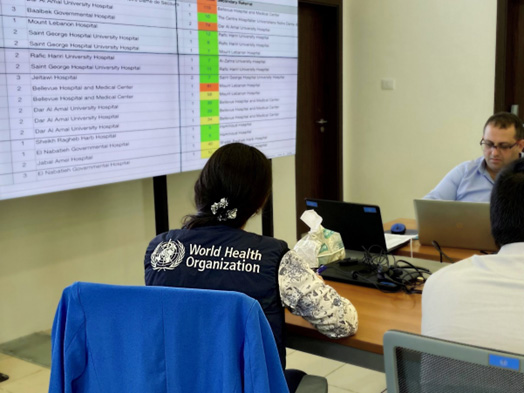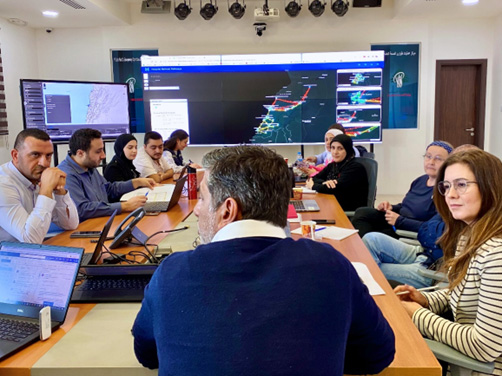Hospitals and emergency services must be able to reconfigure quickly so that the wounded receive the best care possible, while ensuring that patients with other conditions continue to receive uninterrupted services.
To share the latest knowledge in this field, Dr Nelson Olim, Trauma Advisor at the WHO Regional Office for the Eastern Mediterranean, is in Lebanon. Having learned from recent conflicts in the Eastern Mediterranean Region, Dr Olim is working with the WHO Lebanon team to advise the Ministry of Public Health, major health actors and health workers on the best practices in the event of a mass casualty event.
“There are measures we can quickly put in place to deal with mass casualties. For example, simplified triage in hospitals, which separates patients who are unable to walk from those who are walking, ensures that the emergency room is reserved for the 20% of injuries that are truly life-threatening,” said Dr Olim. “More time is needed for other measures, such as setting up a trauma referral pathway or training the public in basic trauma first aid. WHO is supporting Lebanon on all these aspects, so that if the need arises, Lebanese health workers will be properly equipped.”
One of WHO’s current priorities is to set up a trauma referral pathway. This is a network of hospitals that work with each other and share a dedicated dispatch centre, from which a doctor can direct ambulances to the closest facility that has the capability to treat the injuries at hand. If one facility is attacked or out of reach, alternative hospitals in the network can be quickly identified.
“We have brought to the table all the stakeholders – the government, the private sector, the Lebanese Red Cross and other health partners – to analyse the data, map health facilities and agree on a pathway that has everyone’s buy-in,” said Dr Abdinasir Abubakar, WHO Representative in Lebanon. “In case of a major escalation of hostilities in Lebanon, the health sector must be equipped to save as many lives as possible.”
Cross-border fighting between Lebanon and Israel has been on the rise in recent weeks, raising the risk of a mass casualty event in the country. These efforts hold value beyond the current situation, however. Earthquakes, terrorist attacks, stampedes, bridge collapses and large road accidents can all lead to many injuries and deaths at once.
Dr Olim gave a talk on mass casualty management at the Faculty of Medicine of the American University of Beirut last week. The talk was attended by over 800 people, among them surgeons, doctors, nurses and hospital administrators.
This event followed trainings for health workers on the clinical management of trauma injuries, organized by WHO and partners, which began in Lebanon in early November. To date, over 1000 health workers across 51 hospitals have been trained. These trainings will continue in the coming weeks, with a separate session on the organizational aspects of mass casualty events also envisaged.
Find out more about WHO’s efforts in preparing Lebanese hospitals for the possibility of expanding conflict.
 WHO and other health stakeholders discuss the trauma referral pathway at the public health emergency operations centre. Photo credit: WHO/S. Khare
WHO and other health stakeholders discuss the trauma referral pathway at the public health emergency operations centre. Photo credit: WHO/S. Khare









